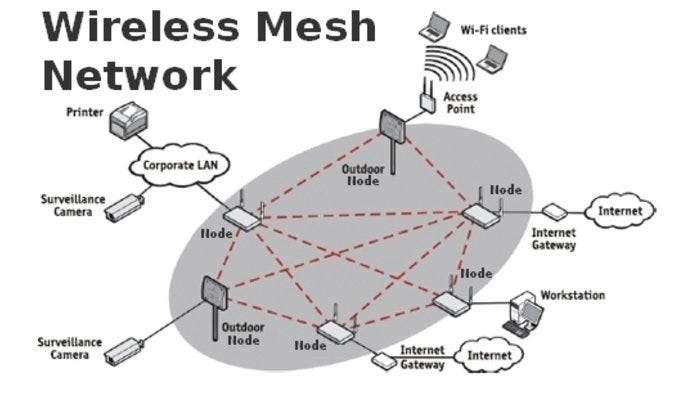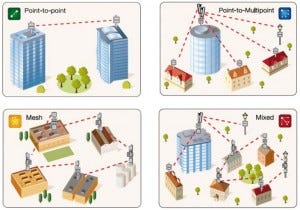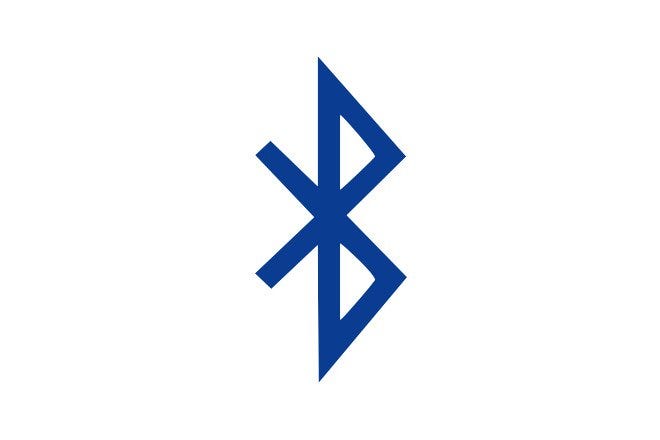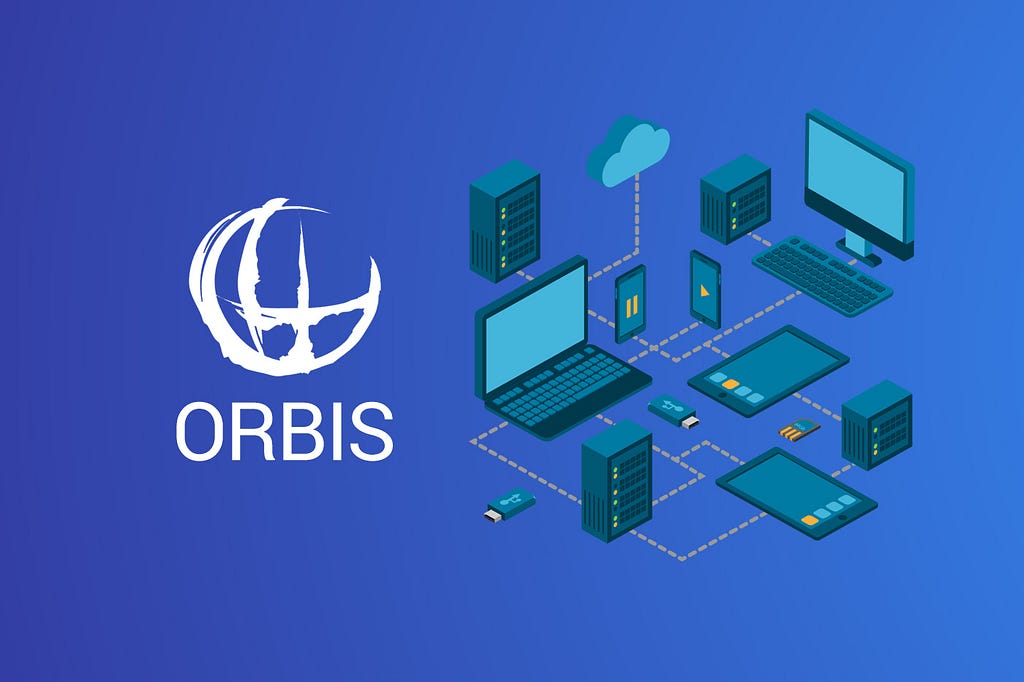Latest news about Bitcoin and all cryptocurrencies. Your daily crypto news habit.
Wireless mesh networks, an emerging technology, may bring the dream of a seamlessly connected world into reality.
You would be forgiven for thinking that wireless mesh networking is just another marketing bullet point for new Wi-Fi routers, a phrase coined to drive up prices without delivering benefits.
But we can avoid being cynical for once: mesh technology does deliver a significant benefit over the regular old Wi-Fi routers we’ve bought in years past and that remain on the market.
Mesh networks are resilient, self-configuring, and efficient. You don’t need to mess with them after often minimal work required to set them up, and they provide arguably the best and highest throughput you can achieve in your home. These advantages have led to several startups and existing companies introducing mesh systems contending for the home and small business Wi-Fi networking dollar.
Mesh networks solve a particular problem: covering a relatively large area, more than about 1,000 square feet on a single floor, or a multi-floor dwelling or office, especially where there’s no Ethernet already present to allow easier wired connections of non-mesh Wi-Fi routers and wireless access points.
All the current mesh ecosystems also offer simplicity.
You might pull out great tufts of hair working with the web-based administration control panels on even the most popular conventional Wi-Fi routers.
In outdoor wireless networking, wireless mesh networks are the third topology after point-to-point and point-to-multipoint in order to build a wireless network infrastructure. Each device in a wireless mesh network is typically called a mesh node and is connected with multiple other mesh nodes at the same time.
Wireless mesh networks are also multi hop networks because each mesh node can reach another node going through multiple hops and leveraging other nodes as repeaters. The major advantage of a wireless mesh networks is the intrinsic redundancy and, consequently, reliability because a mesh network is able to reroute traffic through multiple paths to cope with link failures, interference, power failures or network device failures.
 Point-to-point, Point-to-Multipoint and Mesh Networks
Point-to-point, Point-to-Multipoint and Mesh Networks
Two types of wireless mesh networks are usually implemented for commercial and government applications:
- Unstructured or omni-directional wireless mesh networks
- Structured wireless mesh networks
In an unstructured wireless mesh network, each mesh node typically uses an omni-directional antenna and is able to communicate with all the other mesh nodes that are within the transmission range. Wireless links in an unstructured wireless mesh network are not planned and link availability is not always guaranteed.
Depending on the density of the mesh network, there may be many different links available to other mesh nodes or none at all. Unstructured mesh networks are usually implemented with non-line of sight radios (NLOS) using low frequency and low bandwidth radios operating, for example, in the UHF bands, such as 400 MHz or in the license-free band at 900 MHz.
Unstructured wireless mesh networks leverage one single channel shared by all the radios. Therefore, the higher the number of hops a transmission requires, the lower the overall throughput of the network will be.
Structured wireless mesh networks are planned networks typically implemented using multiple radios at each node location and multiple directional antennas. A ring topology using multiple directional wireless links is commonly used in a structured wireless mesh network to enable each radio to seamlessly reroute traffic through different paths in the event of node or link failures.
Structured wireless mesh networks are often used for mission-critical applications such as wireless video surveillance, public safety, and industrial automation.
They provide the ideal network architecture in case a site requires a highly reliable and available wireless network for a broadband application such as video, voice and data streaming. Each link in a structured wireless mesh network operates on an independent channel and, therefore, the number of hops for a specific transmission does not affect the overall throughput of the network.
Wireless mesh networks have been studied for many years in academia since the early ’90s, initially mainly with military applications in mind, and then they started to get significant commercial traction between 2005 and 2010.
Mesh networks in the world.
Bluetooth technology, the global standard for simple, secure wireless connectivity, now supports mesh networking. The new mesh capability enables many-to-many (m:m) device communications and is optimized for creating large-scale device networks.
It is ideally suited for building automation, sensor networks, and other IoT solutions where tens, hundreds, or thousands of devices need to reliably and securely communicate with one another.
According to networking expert John Shepler, in the near future the Wi-Fi card in your laptop might become an access point in addition to its normal role as network client. In a full mesh topology, every node communicates with every other node, not just back and forth to a central router. In another variation, called a partial mesh network, nodes communicate with all nearby nodes, but not distant nodes. All communications are between the clients and the access point servers. The client/server relationship is the basis for this technology.The pros and cons
Bluetooth Mesh Network has several advantages and application in this decade. Some of them us enlisted here:
- a wireless connection between laptop/pc and smart devices.
- a wireless connection between various peripheral(mouse, keyboard etc.) and devices(radio, audio speaker, displays etc.) and mobile phones.
- transfer of files, images, and MP3 between mobile phones.
- Data logging equipment that transmits data to a computer.
- Smart homes
- Commercial IoT application
- Smart manufacturing
- Peer networking
But these applications are defined within certain ranges. For example, we can not use transfer data or files between the devices that are located at distance of a mile. A powerful bluetooth mesh network can be created and by giving its access globally, we can utilize it in a variety of application including messaging.
And hence, Individual consumers and developers remain locked out of this lucrative market.
And that’s where Orbis comes into the picture.
What is Orbis?
The Orbis platform aims to establish a platform for both consumer and commercial developments in Bluetooth mesh by establishing pre-existing infrastructure and network for developers to deploy onto. — Jason Chao, Orbis CEO.
Orbis creates multi-purpose and flexible infrastructure for developers to build upon and consumers to utilize delivering this through three components: OrbiStore, OrbisWeb, and OrbisToken (OBT). Orbis has applications in IoT development, crowd-sourced networking, and systems integrations.
How does Orbis Work?
Let’s take a simple application, for example, messaging. Messaging however only stands in for the general transmission of data over mesh networks.
After downloading the OrbisWeb app for your IOS or Android device click “connect” and your phone is now a part of a bluetooth network, a node in OrbisWeb.
Then you can proceed to download an app, perhaps Bluetooth messaging from the OrbiStore.
Using the app, your message is broadcasted to all nodes in the range that then, broadcast to other users, is in kind repeated and relayed. This occurs until your recipient has received your message.
And all the while, as your phone too is relaying others’ data, your wallet will be credited OrbisTokens simply for being part of the network which can then be used to purchase paid apps in the OrbiStore.
The value of such decentralized messaging in the face of seemingly universal SMS service and Wi-Fi is that mesh networks are not susceptible to infrastructure damage such as in the wake of natural disasters nor do they require costly connectivity implementations in low-connectivity places such as subway tunnels, underpasses, or even rural areas.
Analyzing Orbis
Using the metrics I follow, which have been highlighted in —
How to make Money by Trading and Investing in Cryptocurrency
1. Great Team:
The development and progress of project rely on team members. Starting from the architectural overview on a piece of paper to how it can be implemented to market and its duration tends to depend on team and advisors. Orbis has team of very young members with an aim to lead the project idea to partnership with actual companies.
- OrisWeb android app alpha version available
- Not having noticable competitors.
- Partnered with Ritech Technology (Shenzhen) Co. Ltd.
Individual consumers and developers however remain locked out of this lucrative market. The Orbis platform aims to establish a platform for both consumer and commercial developments in Bluetooth mesh by establishing pre-existing infrastructure and network for developers to deploy onto.
Orbis creates multi-purpose and flexible infrastructure for developers to build upon and consumers to utilize delivering this through three components: OrbiStore, OrbisWeb, and OrbisToken (OBT).
3. Future ideology
OrbiswebOrbisWeb delivers secure, global, decentralized, and open networks of Bluetooth communities that anyone can participate in. OrbisWeb aims to make Bluetooth mesh development easily accessible to third-party developers with implementations such as IoT, crowd-gathered data, digital infrastructure, logistics, and systems management. For consumers, Orbis apps will bring unique functionalities unattainable with conventional WiFi based apps.
OrbistoreOrbiStore is an application platform open to third-party development, whether utilizing BLE network infrastructure or not and developer income will be supplemented with OBT.
Orbis Token (OBT)Developers are minted new coins based on app usage to coin cap and consumers are minted coins for being active mobile nodes running the OrbisWeb mobile app. OBT is used to purchase paid apps on the OrbiStore and purchase products.
I am pretty stoked for this one. I am VERY bullish on Chinese Blockchain projects, and the NEO ecosystem provides a high energy, high reward platform for growth and usage once mainstream adoption begins. That being said, this token hit home for me and I have participated in the Orbis Airdrop.
ORBISOrbis delivers secure, global, decentralized, and open networks of Bluetooth communities that anyone can participate in. Orbis aims to make Bluetooth mesh development easily accessible to third-party developers with implementations such as IoT, crowd-gathered data, digital infrastructure, logistics, and systems management. For consumers, Orbis apps will bring unique functionalities unattainable with conventional WiFi based apps.
What this means, is that you could use Orbis for —
- IOT Industry
Smarthomes, crowdsourced data, and automation. Control your lights, shades, and HVAC, manage your supply chain, or see live wait times with the Orbis app.
2. BTC Transactions
Use the Orbis mesh network to send and receive cryptocurrencies while offline. Funds are held in escrow until matching transaction data is uploaded.
3. Defense
Mesh provides reliable offline communication in undeveloped landscapes. Mesh can coordinate soldiers and systems in monitoring and managing the battlefield.
4. Telecommunications
Internet sharing and mesh messaging. Sell your mobile data for OBT and message others via mesh. A robust, cheap, and portable solution for disaster relief.
5. Advertising
Sponsored locations and foot traffic data. Be rewarded in OBT for visiting and connecting to a node in a sponsored location!
Quite interestingly, Orbis also announced their airdrop, which would see recently announced their airdrop of a 1,000,000 tokens, to a maximum number of 60,000 NEO addresses.
Simple math tells you it is around 16.7 OBT tokens per person.
Given the fact that an exchange would list OBT at $0.70, that’s a little more than 11 dollars.
Enough for a free lunch :)
Jokes apart. This token does seem like an interesting Hold, and has a strong set of fundamentals IMHO.
I advocate investing in ecosystem tokens and fundamentally strong tokens.
Get your OBT tokens here.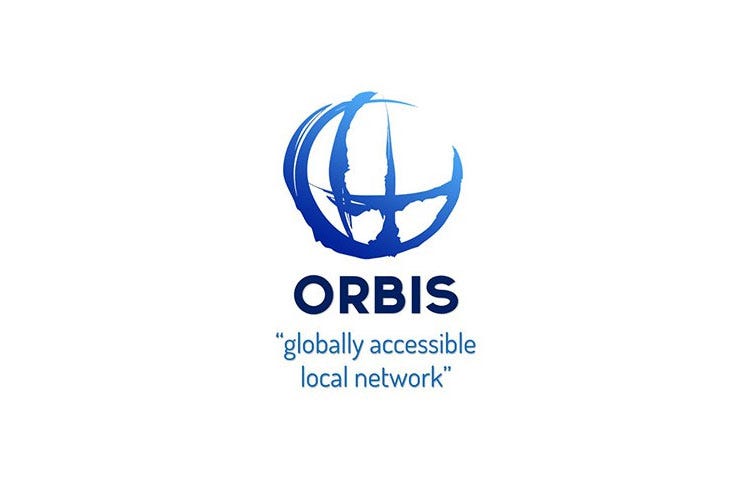 Cheers and Thank you for reading.
Cheers and Thank you for reading.
****************************************************************
Clap 1 time or 50 times. It helps me gain exposure. Thank you !
_
Articulating my thoughts from over the years and super stoked to write about Blockchain, trading, cryptocurrency and life.
I aim to bring Cryptocurrencies to the masses in a well refined, easy to understand manner. Being complicated helps none and neither does the biased media.
Yes, I think the system is a massive lie and it is about time to change that.
_
#longlivecrypto.
**************************************************************
Disclaimer : This is not a sponsored post and while I have signed up for the Orbis Airdrop — I am not affiliated to Orbis in anyway.
Wireless 2.0 — Integrated Networks on the Blockchain. was originally published in Hacker Noon on Medium, where people are continuing the conversation by highlighting and responding to this story.
Disclaimer
The views and opinions expressed in this article are solely those of the authors and do not reflect the views of Bitcoin Insider. Every investment and trading move involves risk - this is especially true for cryptocurrencies given their volatility. We strongly advise our readers to conduct their own research when making a decision.
